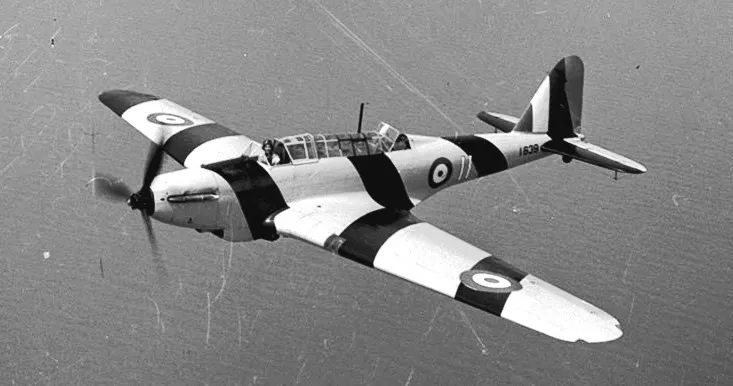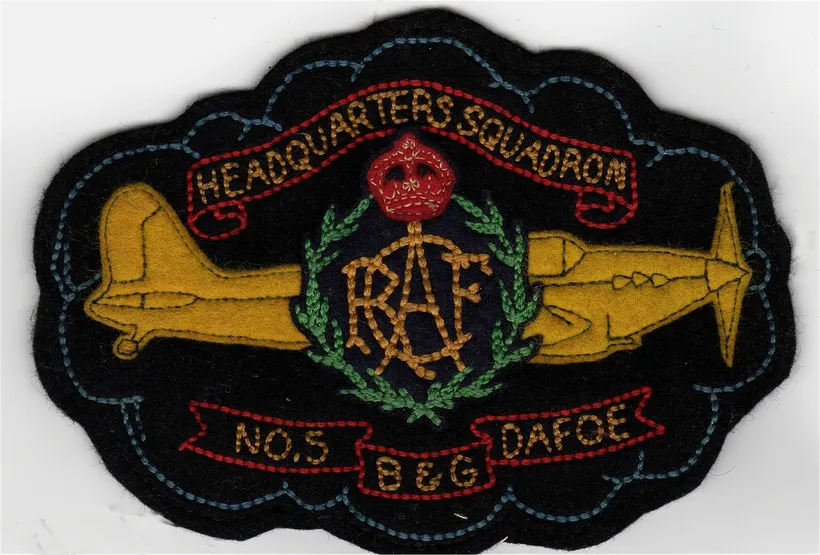Hower, George Gerald Joseph (Leading Aircraftman)
Killed in Flying Accident 1942-March-23


Birth Date: 1920-June-20
Born: Allentown, Pennsylvania
Parents: Son of George Washington and Elizabeth Hower, of Allentown.
Spouse:
Home: Allentown, Pennsylvania, USA
Enlistment: Toronto, Ontario
Enlistment Date: 1941-August-08
Service
RCAF
Unit
5 BGS- Bombing & Gunnery School
Base
Dafoe, Saskatchewan, Canada
Rank
Leading Aircraftman
Position
Wireless Air Gunner
Service Numbers
R/123408
This incident involved multiple aircraft:
- Battle Mk. I Serial: 2069
- Battle Mk. I Serial: 1892
All the above aircraft in the above list are referenced in this report.
Crew or Other Personnel
Battle 1892
Accident Card - Fairey Battle Mk. I serial:1892
This accident involved 2 aircraft on 1942-March-23. They are: Fairey Battle s/n 2069, Fairey Battle s/n 1892.
This accident involved 6 people. Haggart WM, Harris CG, Harris EP, Hood DF, Hower GGJ, Naoum H
This accident had 4 fatalities. Leading Aircraftman Emerson Philip Harris RCAF Killed in Flying Accident service no:R/115946 Battle 2069, Flight Sergeant Harry Naoum RCAF Killed in Flying Accident service no:R/79114 Battle 2069,Leading Aircraftman George Gerald Joseph Hower RCAF Killed in Flying Accident service no:R/123408 Battle 1892, Leading Aircraftman Donald Francis Hood RCAF Killed in Flying Accident service no:R/122168 Battle 1892
Battle serial: 1892

Fairey Battle, RCAF (Serial No. 1639), wearing target towing stripes, used in bombing and gunnery training, July 1941.
The Fairey Battle is a British designed single engine light bomber, used as a trainer in the RCAF. The Battle was powered by the same high-performance Rolls-Royce Merlin piston engine that powered various contemporary British fighters including the Spitfire. It was, however significantly heavier, with its three-man crew and bomb load. Although it was a great improvement over the aircraft that preceded it, the Battle was relatively slow and limited in range. It was only armed with two .303 in machine guns facing the rear, and was found to be highly vulnerable to enemy fighters and anti-aircraft fire.
The Fairey Battle participated in direct combat missions during early stages of the Second World War and earned the distinction of attaining the first aerial victory of an RAF aircraft in the war. In May 1940 the Battle suffered heavy losses, frequently in excess of 50 percent of aircraft sortied per mission. By the end of 1940 the type had been entirely withdrawn from active combat service, and was relegated to training units overseas, with many serving in Canada.
The RCAF received its first batch of eight Battles in August 1939, at RCAF Station Borden, Ontario. A total of 802 Battles were eventually delivered from England, serving in various roles and configurations, including dual-control trainers, target-tugs, and gunnery trainers for the Bombing and Gunnery schools of the Commonwealth Air Training Plan. Canadian use of the Battle declined as more advanced aircraft, such as the Bristol Bolingbroke and the North American Harvard were introduced. Battles remained in RCAF service until shortly after the end of the war hostilities in 1945. No. 111, 115 and No. 122 Squadrons of the RCAF flew Battles.
Fairey Battles were not manufactured in Canada, but they were assembled, serviced and modified here, including the installation of turrets at the Canadian Car and Foundry plant in Montreal. Harold Skaarup web page with revisions
Aircraft Images
Battle 2069
Battle Mk. I 2069
Ex RAF K9350. TOS 24 Sept 1941 at No. 8 Repair Depot, Winnipeg. To No. 2 Training Command 11 Nov 1941 for No. 5 Bombing and Gunnery School at Dafoe Sask. Collided with #1892 during gunnery exercise and abandoned 6 m SE of Dafoe, 23 Mar 1942; Sergeant E. Naoum and Leading Aircraftman D.F. Hood were killed; Sergeant W.M. Haggart bailed out safely; SOS 31 Mar 1942; Cat A write-off.1941-09-24 Taken on Strength 2019-08-20
1942-January-15 Accident: 5 Bomb & Gunnery School Loc: Aerodrome Names: Souberman
1942-March-23 Accident: 5 Bomb & Gunnery School Loc: Aerodrome Names: Haggart | Harris | Harris | Hood | Hower | Naoum
1942-03-31 Struck off Strength Struck off after Category A crash on 23 March 1942 2019-08-20
Battle 1892
Battle Mk. I 1892
Ex RAF L5220. While with the RAF it had served with No. 150 Squadron, and was badly damaged in a forced landing on 20 September 1939, being repaired by Scottish Aviation. Transferred to RCAF, TOS 7 Apr 1941 at No. 8 Repair Depot, Winnipeg, winter conversion carried out. To No. 2 Training Command 14 May 1941 for No. 5 Bombing & Gunnery School, Dafoe, Sask. Mid-air collision with #2069 during gunnery exercise and crashed 6 m SE of Dafoe, 23 Mar 1942. LACs G.G.J. Hower, E.P. Harris and C.G. Harris were all killed in this aircraft. SOS 31 Mar 1942; Cat A write-off.1941-04-07 Taken on Strength 2019-08-20
1942-March-23 Accident: 5 Bomb & Gunnery School Loc: Aerodrome Names: Haggart | Harris | Harris | Hood | Hower | Naoum
1942-03-31 Struck off Strength Struck off, after Category A crash on 23 March 1942. 2019-08-20
Unit Desciption
5 BGS (5 Bomb and Gunnery School)
The Bombing and Gunnery School (B&GS) offered instruction in the techniques of bomb aiming and aerial machine gunnery to Air Observers, Bomb Aimers, and Wireless Air Gunners. These schools required large areas to accommodate their bombing and gunnery ranges, and were often located near water. The Avro Anson, Fairey Battle, Bristol Bolingbroke, and Westland Lysander were the standard aircraft used at B&GS schools.
RCAF.info - RCAF Station Dafoe SK
![]() Saskatchewan Virtual War Memorial - 5 BGS History
Saskatchewan Virtual War Memorial - 5 BGS History
![]() Vintage Wings Ghosts Of Saskatchewan
Vintage Wings Ghosts Of Saskatchewan

